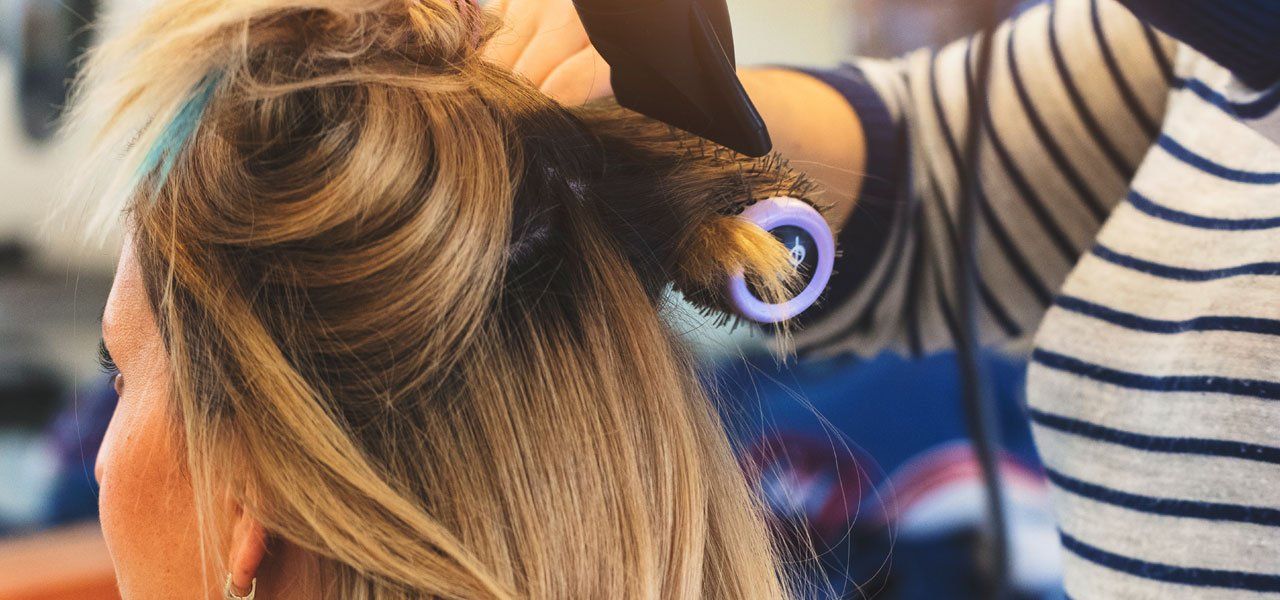BLOG
Blog

By Morgan Elizabeth
•
29 May, 2020
Like myself, you’re probably missing having your hair done. Here are some tips to hopefully see you through until hairdressers can take appointments again. Roots Most of us are having to deal with seeing our natural colour everytime we look in the mirror. There are some simple ways to disguise them. You could start by trying a zig-zag parting rather than a straight one. This will add some volume and give your roots a ‘shadow’. You could also back comb the hair either side of your parting and slightly above your crown, this again will add height and help hiding your roots. Dry shampoo is fab for blondes, some brands also do a brunette one. These are quick and easy to use especially if your heading out to the supermarket. Root sprays. These are going to be your best friend! There are various brands, but l’oreal do one which I can recommend and is available in a variety of colours. I’d strongly advise against using a box colour. Unlike professional colours, it’s not a case of one product suits all. Box colours can be harsh on hair and may leave your hair feeling and looking worse afterwards. If you do feel the need to use a box colour, please stick to one that is ‘natural’. A natural blonde or natural brunette. Avoid ones that are golden, burgundy, mahogany or warm, these will be harder to remove if they aren’t to your liking. Colour fade Avoid washing your hair everyday or even every other day. The more you wash your hair, the quicker your colour will fade. Use cool water whilst washing your hair, hot water opens the outer layer of the hair causing the colour to fade prematurely. There are shampoos and conditioners for brunettes and red heads that are tinted, or you could use a colour saving shampoo. For any blondes that feel like you need a freshen up, purple shampoos and conditioners can be used to eliminate brassy areas. I recommend that you use them no more than once a week. If your hair is porous you will end up with a purple tint to your hair if you use them too often. Fringes I guarantee they are far too long and getting on your nerves, am I right? I know its tempting to reach for the kitchen scissors and give it quick trim, but instead try growing your fringe out, grip it back off your face, include it in a plait but use hairspray to hold hair in place. If you do have to trim your fringe, please only cut off a bit at a time and do it gradually until you’re happy with the length. Split ends In reality, who’s going to see them? Everyone is in the same boat. Minimize use of heated tools, use your hairdryer on a medium heat and use a heat protector if you do use straighteners or curlers. Even things such as combing wet hair, gently working your way from ends to roots. Avoid brushing wet hair, doing so stretches the hair and can result in being over stretched and snapping. If your hair tends to be knotty, don’t be rough and use a detangler, this will help your brush/comb to glide through your hair. Use this time to look after your hair. I recommend that you use a conditioning treatment once a week - you can leave them on for a minimum of 5-10 minutes. Your hair will feel and look amazing with a little bit of TLC. I advise that you get your hands on a few products. If you need any recommendations for products brands, drop me a message. Ill be more than happy to help. Coloured root spray Dry shampoo Professional shampoo and conditioner Hairspray Heat protector Detangler Conditioning mask

By Morgan Elizabeth
•
30 Apr, 2020
Do you ever look at your hair brush and think ‘I could make a wig with all this hair?’ Well, did you know that we lose around 100 hairs a day? Some people may lose less, some may lose more. But it’s completely normal! We don’t lose them all at once, they gradually fall out throughout the day. You’ll mainly notice them whilst brushing and shampooing. Natural shredding is completely normal and is part of the hair growth cycle. Each strand of hair goes through a 4 stage cycle. 1.Growing phase - this can last between 2-7 years depending on the length of your hair. 2.Transition phase - this can last about 10 days. 3.Resting phase - this tends to last about 3 months. Around 10-15% of hairs are in this phase. 4.The new hair phase - the part of the resting phase where the old hair sheds and a new hair continues to grow. When should you be worried about hair loss? If you notice an increase in hair loss, this is when you should start paying attention. There are many different triggers that can cause hair loss. Stress One of the biggest triggers is stress, significant stress pushes large numbers of hair follicles into a resting phase. Vitamin Deficiency Iron - with a lack of iron in your system, your body will send oxygen to support more fundamental organs. This takes priority over sending nutrients to the hair follicles, which may lead to hair loss. Vitamin A - too much or too little vitamin A can result in hair loss. Biotin (Vitamin B7) - is considered the optimal hair and skin vitamin Vitamin D - is essential to hair growth as it stimulates the hair follicles and helps maintain thickness of existing strands. Vitamin D deficiency may be a possible cause of alopecia areata. Alopecia Alopecia areata is also known as spot baldness. It often results in a few coin sized bald spots on the scalp. In few cases, all of the hair on the scalp or all body hair is lost and loss can be permanent. Alopecia areata is an auto immune disease with no cure. Traction Alopecia Traction alopecia is hair loss that’s caused by repeatedly pulling on your hair. Wearing your hair in a tight bun, ponytail or braids really pulls on your hair. Traction alopecia can be reversed if you stop pulling your hair back so tightly. So while sticking your hair up in a bun is practical, try doing a looser messier bun/ponytail. Hormones Hormones are the most common cause of hair loss. DHT is the hormone behind hairloss by miniturizing hair follicles, causing them to stop growing and eventually falling out. Post Partum Post pregnancy hair loss is related to the drop in estrogen after giving birth. Estrogen level are high during pregnancy and estrogen increases hairs ‘resting phase’. Post pregnancy hair loss is usually temporary only lasting for several months. Weight loss Excessive weight loss can throw the hair follicles into their ‘resting phase’, where many hairs are shed. Medication Hair loss is a common side effect of many medications. Drugs can cause hair loss by interfering with the normal cycle of hair growth. Most of the time hair loss is only temporary and should stop once you’ve adjusted to or stopped taking the medication. Ageing Hair loss during menopause is the result of a hormonal imbalance, the levels of estrogen and progesterone drop. Most menopause related hair loss does slow down over time. What you can do to help If your hair loss is concerning you, I’d advise that you make a doctors appointment - especially if you are losing hair rapidly or at an early age (teens or twenties), you have pain or itching with the hair loss or if the skin on your scalp under the involved area is red, scaly or otherwise abnormal. If you feel like you don’t require a trip to your GP, there are several things you can try. Change your diet by eating a balanced healthy diet. Start taking vitamins. Look for products containing Iron, Vitamin C, Vitamin B12, Vitamin D3, Copper and Zinc. Change up your hairstyle. Avoid styles that put too much strain on the hair. I’d also avoid the use of extensions as they can add unnecessary weight. I’d also advise minimum use of heat tools. If you are going to use straighteners or curlers, please use a heat protection spray. So many people don’t!
© 2024. The content on this website is owned by us and our licensors. Do not copy any content (including images) without our consent.

